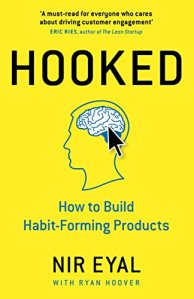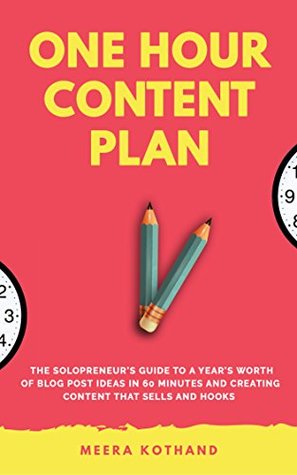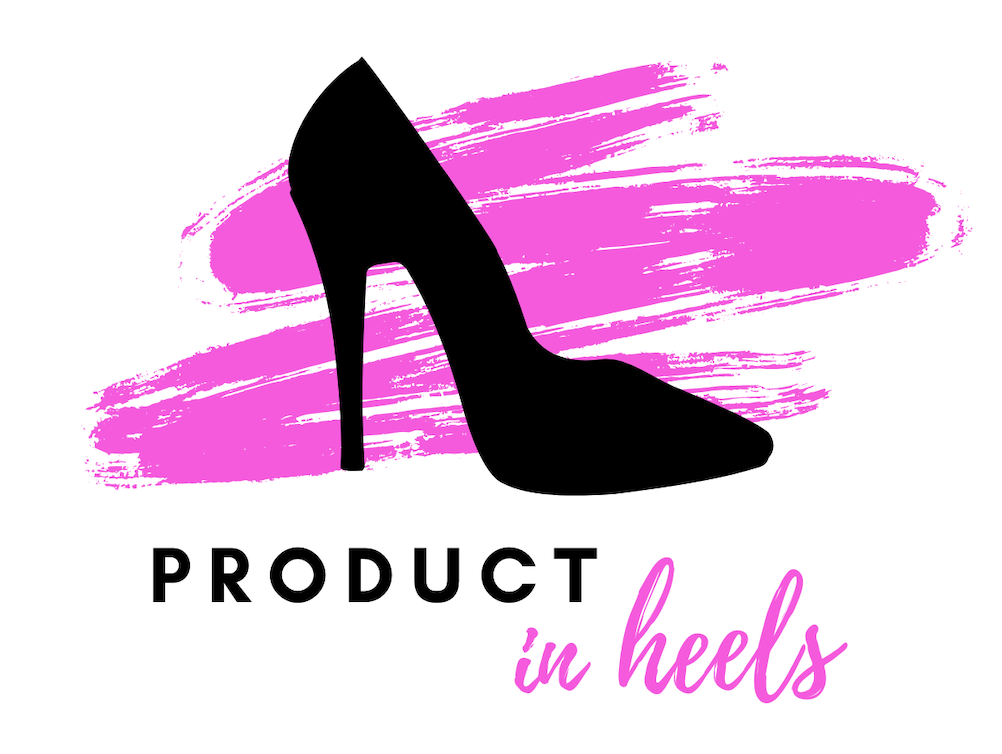
I hope you enjoy this month’s books and punny title!
I’ve decided to introduce some product management books into my reading schedule. For July I decided to read Hooked: How To Build Habit Forming Products.

Hooked: How To Build Habit Forming Products
Nir Eyal with Ryan Hoover

Book review
Hooked explores how the best products leverage their users everyday habits to keep them coming back for more. There were so many great examples explored in this book, I can’t fit it all into this short review. It also contains helpful exercises you can complete at the end of each chapter to apply the theory to your own product.
The Hooked model for product design begins with an internal or external trigger prompting a user to take an action. A user’s action results in a variable reward and they continue to use the product. After a few rounds, they become hooked.
Why are habit forming products important? The short answer: you’ll save yourself a lot of time and wasted marketing dollars.
Hooked users become brand evangelists—megaphones for your company, bringing in new users at little or no cost.
Lessons
- Understand your customers’ – these are the cues you can use to get them to engage with your product
- The more time or information a customer has invested with your product, the more likely they are to stick with it
- Customers will become less sensitive to price when your product has become a part of their daily routine
- As a product designer would you use your own product? Do you believe it improves people’s lives? If you could see some of your users were using your product too much, would you do something to help them?

Jacinda Ardern: Leading With Empathy
Supriya Vani & Carl A. Harte

Book review
I would have given this book 4 stars however I marked it down for not satisfying my Jacindamania.
Firstly, I found the history of New Zealand politics in this book too much. Secondly, the authors misled Jacinda Ardern in order to secure interviews with her. I love her response on the matter here.
It was well worth the read for the glimpse into Jacinda Ardern’s life. It seems as though everyone who knew her thought she was destined for great things. Growing up in a small, poverty-stricken town left a huge impression on her that follows her throughout her career in politics.
A woman with ambition, yet never lets her ego get in the way. There were opportunities where she could have pushed to be the next prime minister, however, she held back until the right time.
She never dropped her work ethic when campaigning for seats she knew she would lose. She worked even harder when campaigning for seats that were considered a guarantee. Quite simply, she never gives up.
Jacinda Ardern intentionally carved out a path that allowed her personality to shine and is an advocate for leading with empathy and compassion. This is what makes her inspirational to so many people around the world.
Lessons
- Work hard and set high standards for yourself
- You don’t have to change who you are to be a good leader – empathy, compassion and generosity are all as important as confidence
- Ardern’s advice for young women:
When opportunities come up say, “Yep, I can do that job.”

The Essential Habits Of 6-Figure Bloggers: Secrets of 17 Successful Bloggers You Can Use to Build a Six-Figure Online Business
Sally Miller

Book review
This book gives you direct access to 17 successful bloggers. It had the potential to be gimmicky but I was pleasantly surprised with the quality of this book. I found it inspiring and I’m glad I gave it a go.
The author argues that these successful people all have three things in common:
- They have a vision & a strategy (sound familiar?)
- They never give up
- They have systems in place to get things done
Ebbs and flows are natural in business; it’s how you react to them that matter. Learning to keep a positive mindset and push forward when times are tough will be imperative to your success.
Lessons
- Focus on your email marketing efforts and building your list
- Let go of any social media or activities that aren’t working or adding value to your blog
- Schedule time to write and try to post consistently – many of them talked about posting on the same days twice a week
- Use scheduling tools for your content
Picking a problem and exhaustively writing about it develops something inside of you, as a writer, that makes later writing better and more powerful. It increases your ability to persist in the face of challenge.


The One Hour Content Plan: The Solopreneur’s Guide to a Year’s Worth of Blog Post Ideas in 60 Minutes and Creating Content That Hooks and Sells
Meera Kothand



Book review
This book is short, easy to follow and full of helpful tips to create your best content. If you’re a beginner blogger do yourself a favour, grab a coffee, and read this book.
The first theme in this book is, you guessed it, having a vision and strategy! The author then talks you through how to create buckets for your content so you can go deep into topics your audience is interested in.
You want your content to help shift your audience through the lifecycle:
- Stranger > casual reader > subscriber > engaged subscriber and fan > brand advocate > customer (if monetising your blog)
Lessons
- Maintain a swipe file of all your ideas and regularly review it
- Have a system in place to capture all of your articles and their associated content & keywords (this will save you time later when you write new articles you can search the topics)
- Use tools like Buzzsumo to see the top trending posts in your niche
- Ensure all images are SEO friendly – keyword in title, alt tag and file name (I’ve been using the Yoast SEO plugin)
- Serve up relevant content at the end of each blog post to keep readers on your blog (sounds like a tip from Hooked!)
Your ideal reader should become like an imaginary friend. You should know your ideal reader so well that you can start a conversation with her at any time. You know when she shakes her head because you say something she doesn’t agree with. You know what makes her smile or laugh. You know the questions she asks. You know how to charm and flatter her.”

You’ve just added to my already substantial To Be Read pile, Amy! It’s a good job you wrote this post just after payday!
One Hour Product Plan looks really good. I’m also interested in seeing if there’s anything from Hooked that could be applied to fiction.
I’m a little ambivalent about the Jacinda Arden biography due to the controversy around the interviewing, but think the desire to know more about the life of such an admirable politician will push me into reading it. I love the lesson you’ve pulled from it about what makes someone a leader.
Haha, I can only imagine how many books must be on that pile! Nothing better than payday!
The Jacinda book really annoyed me. I literally bought it because of the cover and a desire to read about her. It was only after I paid almost $40 that I discovered the controversy surrounding it! I’m going to try some of the other biographies out there, she is an outstanding leader.
Oh wow, I hadn’t thought about Hooked from that perspective. I think you could get a lot out of it. It covered obvious examples like fitness apps, banking products, social media. There were some wildcards in there too like a whole chapter at the end dedicated to a Bible app!
A few thoughts on the parts of the Hooked model that could be relevant for fiction:
1. Triggers. What internal or external factors lead someone to a science fiction book? And your book specifically? You want to map out the journey end to end as it might highlight something obvious but overlooked. I’d also be thinking a bit left field in terms of what the daily routines are of science fiction fans. That might open doors in terms of where you advertise, or how you get some free chapters/samples out…
2. Engagement. What happens when someone finishes reading your Extinction Horizon book? How do you get them motivated to pick up the next one and back through the Hooked model? There would be opportunities here for external triggers – that could be a bonus chapter at the end of the first book, an email or a notification (that’s hard if you don’t have the data or the app though). Having a series is good as you are making the reader invested in your story.
3. Variable rewards. Can you reward someone for finishing a book? Or for reviewing your book? Or progressing through your books? Your book itself is also the reward I guess if it leaves someone feeling satisfied. You want it to leave them wanting more! Deltora Quest by Emily Rodda springs to mind. I used to love reading the books to collect the gemstones down the spine!
I’m sure you’d see things in this book that I would never think of so keen to hear your thoughts if you do get around to reading it! I think what makes the book as a product so challenging is that your customers aren’t all the same, and you don’t have analytics to monitor someone’s brain as they read it. You only get feedback after they’ve completed the book.
Maybe I’ll shop around for a more ethical biography, then, and let you know if I find a decent one!
An author group I’m a part of utilizes product development language when talking about writing genre fiction. They recommend an Agile approach: identify the tropes and authorial style of your chosen genre, then write a 3000 word MVP. Share that with a user group of other authors and use their feedback to refine the work. Rinse and repeat until you have a full manuscript, cover, blurb etc.
The Hooked model seems to fit with that approach in that it refines the product triggers (cover, targeting the right audience with the free sample available with ebooks) to help your book get noticed by potential buyers scrolling through Amazon. The tricky bit, which I’m pondering at the moment, is how to draw attention to my book while still sticking to genre expectations.
You’re right about analytics. I love to see the feedback provided when running Amazon or Facebook ads, which provide a decent breakdown on demographic engagement, but, once someone’s reading the book, you’re in the dark until (and if!) they review it. Which it’s why it’s so useful to have beta readers, especially other authors.
I will have a read and let you know!